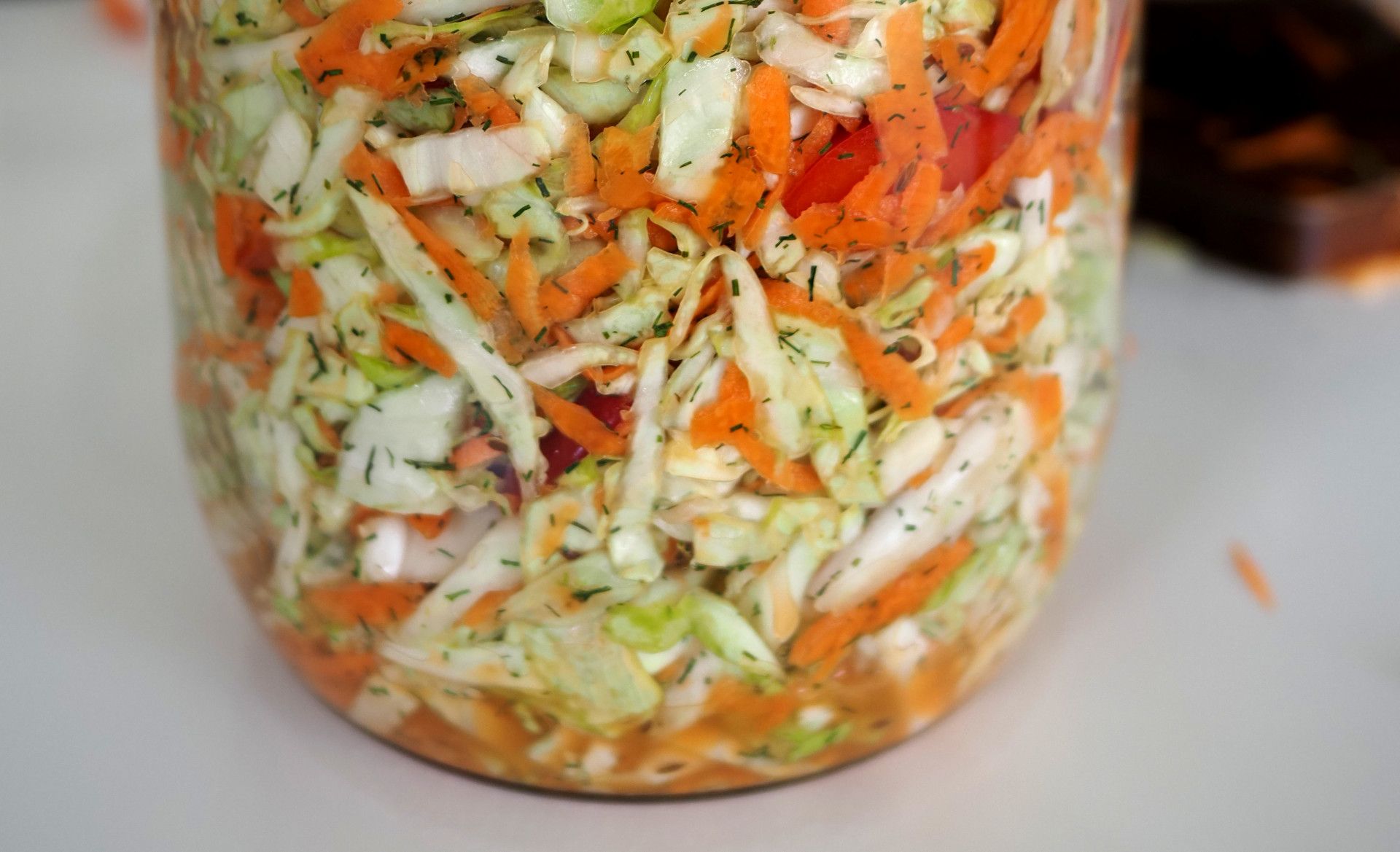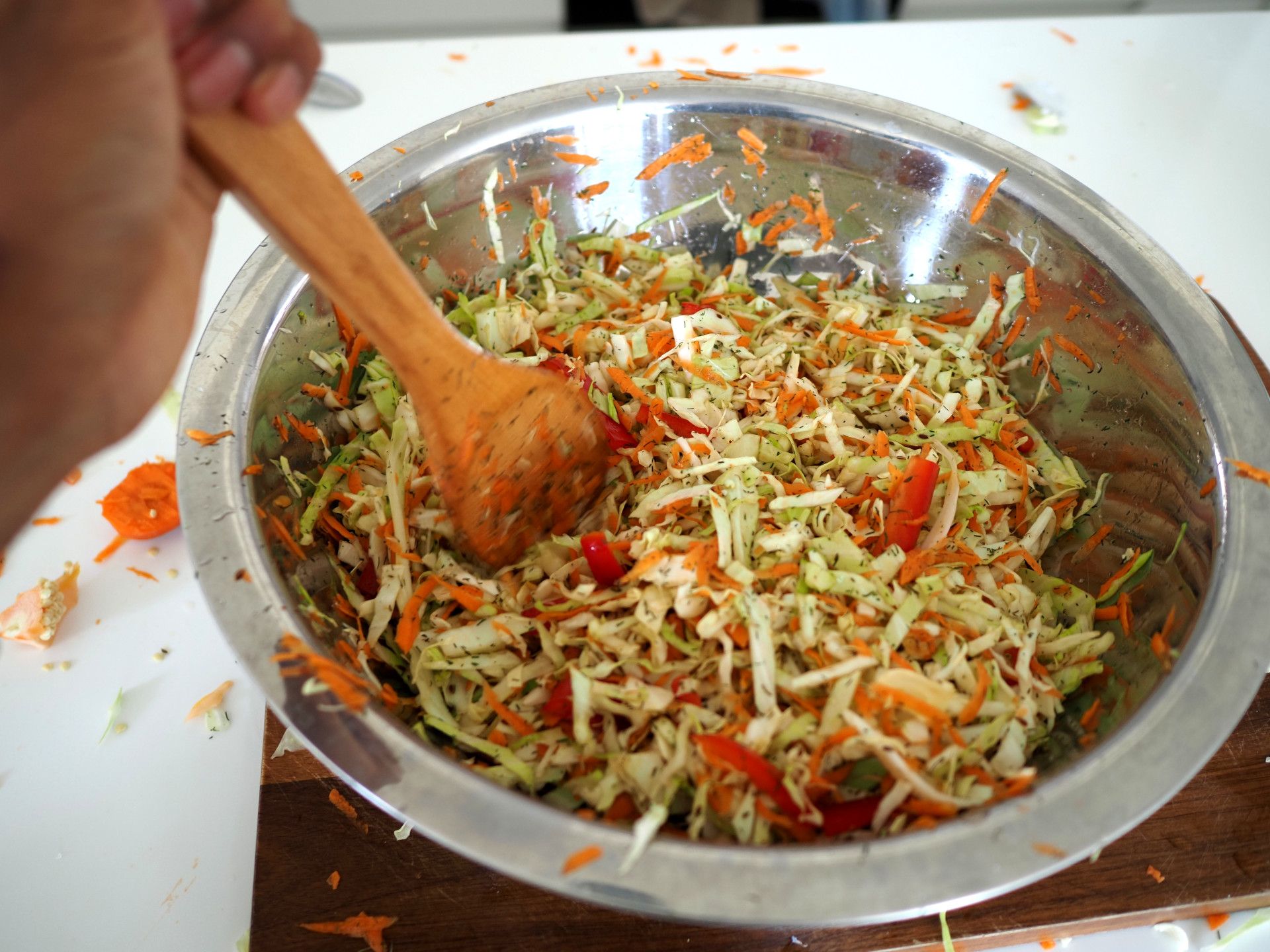My Sauerkraut Recipe
An easy nutritious home-made Sauerkraut recipe.

This is my special sauerkraut recipe that I have been making for many years. As well as traditional cabbage, I add carrot and capsicum plus dill seeds and leaves. You can also experiment with adding fine sliced garlic and/or chili peppers for an Asian twist.
I make it in a batch of up to 1.5kg using a 3L Kilner Fermentation set. This can also be quite an economical recipe as you turn a few dollars worth of ingredients into ~$50 fresh store-bought sauerkraut in about 30 minutes. Plus it tastes way better IMO. It lasts pretty well in the fridge for a couple months.
Don't be disheartened if it goes moldy on your first try. Give it another shot with better hygene practices and a better jar/crock setup with airlock. First two times I got a bit of mold by but I have done it over 15 times after that and never had an issue after consistently cleaning everything before use. Zapping the jar for 1 minute in the microwave then letting it cool can help.
The thickness of vegetable slicing, frementation time/temperature and the amount of pounding can be adjusted based on what you prefer: chunkiness vs sourness vs crunchiness.
Equipment
- Large sharp knife and cutting board
- Large bowl (I use a very large stainless steel bowl)
- Accurate scales
- Wooden spoon or other bashing tool
- Large fermentation jar with airlock (e.g. Kilner 3L) or fermentation crock, or do an internet search for other ideas with existing jars
- Spare jars/containers for storage in fridge
Ingredients
- 1 to 1.5kg thinly sliced/grated fresh veges. I typically use: sliced cabbage (~70%), grated carrot, sliced capsicum (1 medium or 0.5 large).
- 20g salt for every 1kg sliced/grated veges (i.e. total salt concentration = 2%)
- Other Flavorings (optional):
1.5 tsp dried dill leaf tips
1 tsp Dill seeds or Ajwain (Carom) seeds

Method
- Clean all items (and preferably sterilize with a short zap in the microwave + cool down) before use where possible, and ensure veges are clean with bad bits removed before preparing. This helps eliminate the chance of mold.
- Measure weight of sliced veges + flavorings, then add them to an extra-large mixing bowl. Make sure you note down the weight of ingredients accurately.
- Measure and add the correct amount of salt based on measurement in step 2. As listed, it should be 20g salt per 1kg veges/flavouring ingredients.
- Thoroughly mix and pound ingredients in bowl with wooden spoon for a few minutes. Ingredients will soften, reduce in volume, and become juicy. You can experiment here: pound less for a crunchy kraut, more for a softer one.
- Transfer veges and juice into clean/sterilized fermentation jar (or other fermentation container) and install lid and airlock as per jar instructions.
- Leave in a cupboard or suitable warm/dark place for 1-2 weeks or more depending on preference. The longer you leave it, the more sour it gets, so you can experiement. It is also highly dependent on temperature, in cold winter conditions, it can take longer. Usually its about 1 week for me when the average room temperature is 23°C. Suggest checking every couple days to observe fermentation progress.
Good: bubbles, nice sour taste/smell, vege colors becoming less vibrant.
Bad: signs of mold, slime, signs of airlock failure causing excessive brown oxidation, rotten smell. - Once it has fermented to your taste, transfer from fermentation jar into smaller spare jar(s) and store in fridge. Note that it might continue to get more sour in the fridge but only at a very slow rate.

